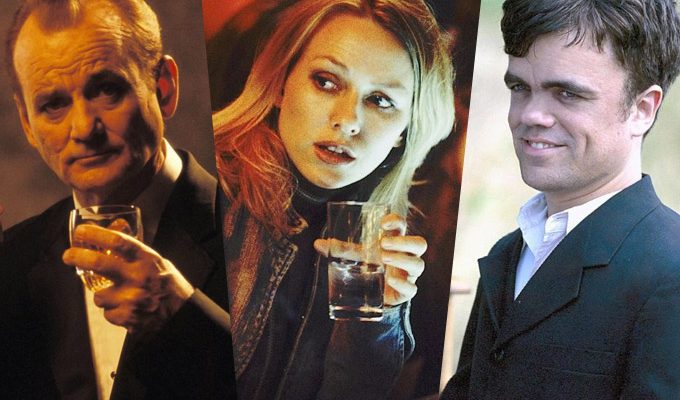 With 2015 upon us, we figured it was a good time to look back on the movies the millennium has brought us. And so we’ve dug into the archives and are re-running our Best of the 2000s pieces, from way back in 2009 when the Playlist was a little Blogspot site held together with tape and string. Each list runs down the top 10 films of each year (it’s possible that, half-a-decade on, we’d put them in a different order and even change some of the movies, but we wanted to preserve the original pieces untouched as far as possible). Check out 2000, 2001 and 2002 if you missed them, and today we continue with 2002. The original piece follows below, and thanks to staffers past and present who contributed.
With 2015 upon us, we figured it was a good time to look back on the movies the millennium has brought us. And so we’ve dug into the archives and are re-running our Best of the 2000s pieces, from way back in 2009 when the Playlist was a little Blogspot site held together with tape and string. Each list runs down the top 10 films of each year (it’s possible that, half-a-decade on, we’d put them in a different order and even change some of the movies, but we wanted to preserve the original pieces untouched as far as possible). Check out 2000, 2001 and 2002 if you missed them, and today we continue with 2002. The original piece follows below, and thanks to staffers past and present who contributed.
If sequels were the name of the game in 2002, things didn’t change much in ’03, as franchises began to curdle with disappointing new installments like “The Matrix Reloaded,” “The Matrix Revolutions,” and “Terminator 3: Rise of the Machines,” proving to many that the allure and mystique of a series could easily be destroyed with unnecessary installments. Other warmed-over chum-like sequel continuations in that vein were “2 Fast 2 Furious,” “Freddy vs. Jason, “Bad Boys” II,” and the positively godawful “Scary Movie 3” and “Final Destination 2.”
The exception to that rule would of course be Peter Jackson‘s “Lord Of The Rings: The Return Of The King” which would win Best Picture and sweep the Oscars that year (winning 11 of 11 nominations), perhaps as an overall-achievement award from the Academy that had mostly snubbed the admirably conceived and executed series thus far. At Cannes, Gus Van Sant‘s elliptical and ambiguous Columbine reflection, “Elephant” would win the Palme d’Or, and Vincent Gallo‘s “The Brown Bunny” would be ripped to shreds by critics and audiences alike (and would not be released in the U.S. until the following year with a major edit). The original cut of the film would also be famously condemned by Roger Ebert as the “worst film in the history of Cannes” and in retaliation, Gallo would put a hex on the critic. Onwards to our top ten…
 10. “28 Days Later”
10. “28 Days Later”
After two back-to-back films were considered critical and financial failures (“A Life Less Ordinary” and “The Beach“) a frustrated Danny Boyle dropped the star power, went for broke, stripped everything down to the basics, and came up with some fabulous results in the digitally-shot “28 Days Later” which re-galvanized the perennially stale zombie movie by transforming it into a frightening (and prescient) tale of a sudden infection producing bizarre and terrifying results in humans. Outbreak movies have been done before, but none grabbed the zeitgeist in the same way, terrifying people with its seemingly plausible results (and anticipation of things like the swine-flu and other global epidemics). Newcomer Cillian Murphy quickly flew onto Hollywood’s radar with his breathlessly rattled performance as a man who wakes up from a 28-day coma to find himself and a few scrappy survivors clinging to life in a zombie-filled London wasteland. While the film spawned a renaissance of steroid-fueled pics featuring the undead, none of the copycats were blessed with the apocalyptic score by John Murphy looming over them like the angel of death descending upon on the remains of humanity.
 9. “The Son”
9. “The Son”
One of Belgian auteurs Jean-Pierre and Luc Dardennes‘ twin peaks this decade, “The Son” is the most symbolically and allegorically loaded film the brothers have made to date. It’s a hair’s width better than 2005’s “L’Enfant,” and it bears greater lineage to the practiced minimalism of Robert Bresson, whose emphasis on “automatism” and the omnipresence of God factor heavily into this allegory of forgiveness and redemption. At the center of the film’s vortex of emotional turmoil is Dardenne regular Olivier Gourmet, who won Cannes’ Best Actor prize for his portrayal of a morally tested carpentry teacher, tasked with mentoring a pupil who has a dark relationship to his past. Channeling Bresson’s economic storytelling, the Dardennes’ keep their plot tantalizingly ambiguous and suspenseful, furthering that tension with breathtaking use of location, turning a shed and a maze of wooden planks into both a striking threat and a projection of the film’s religious overtones.
 8. “Millennium Mambo”
8. “Millennium Mambo”
Hou Hsiao-Hsien‘s “Millennium Mambo” begins with the radiant Vicky (Shu Qui) gliding through a brightly-lit corridor in slow motion, set to the film’s pillowy techno theme. She glances behind her occasionally, flashing a smile, and it’s unclear whether she’s heading toward something or moving away from it. The scene establishes an atmosphere of modernity new to the Taiwanese master, and the film itself serves as a rebuttal to those who’ve criticized him for being a stuffy formalist and out of touch with the younger generation. The narrative is appropriately elliptical, relating to a life that passes by too fast, lost in a haze of drugs, alcohol and countless nights forgotten. Vicky flits from one seedy Hong Kong bar to the next, from one abusive boyfriend to another. But Hou is less interested in stern critique than he is with finding empathy for his directionless heroine.

